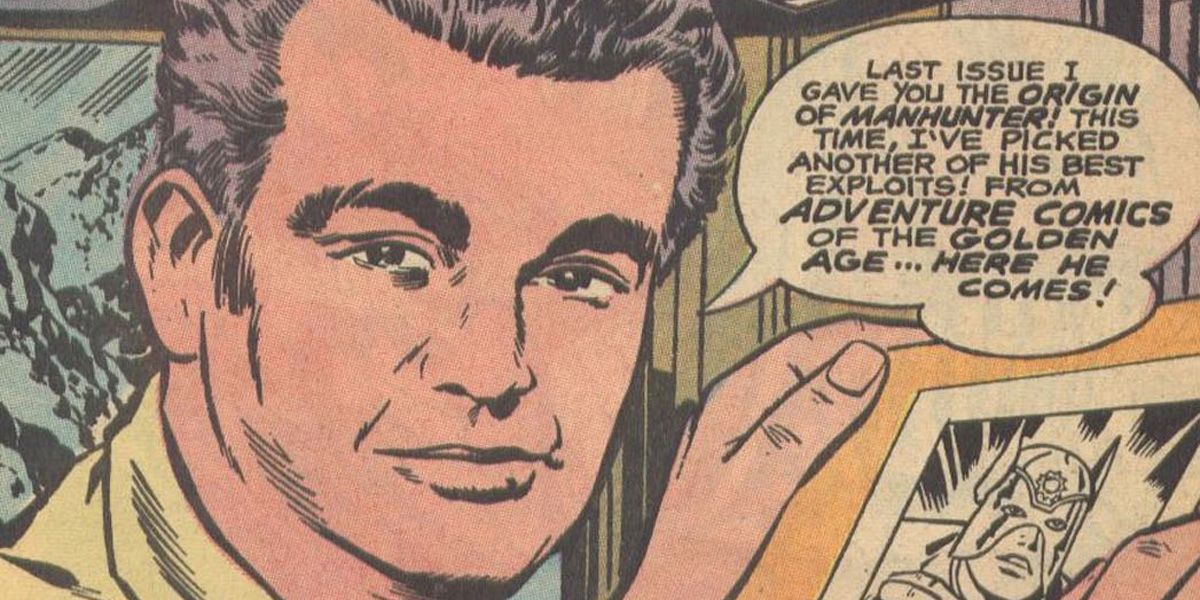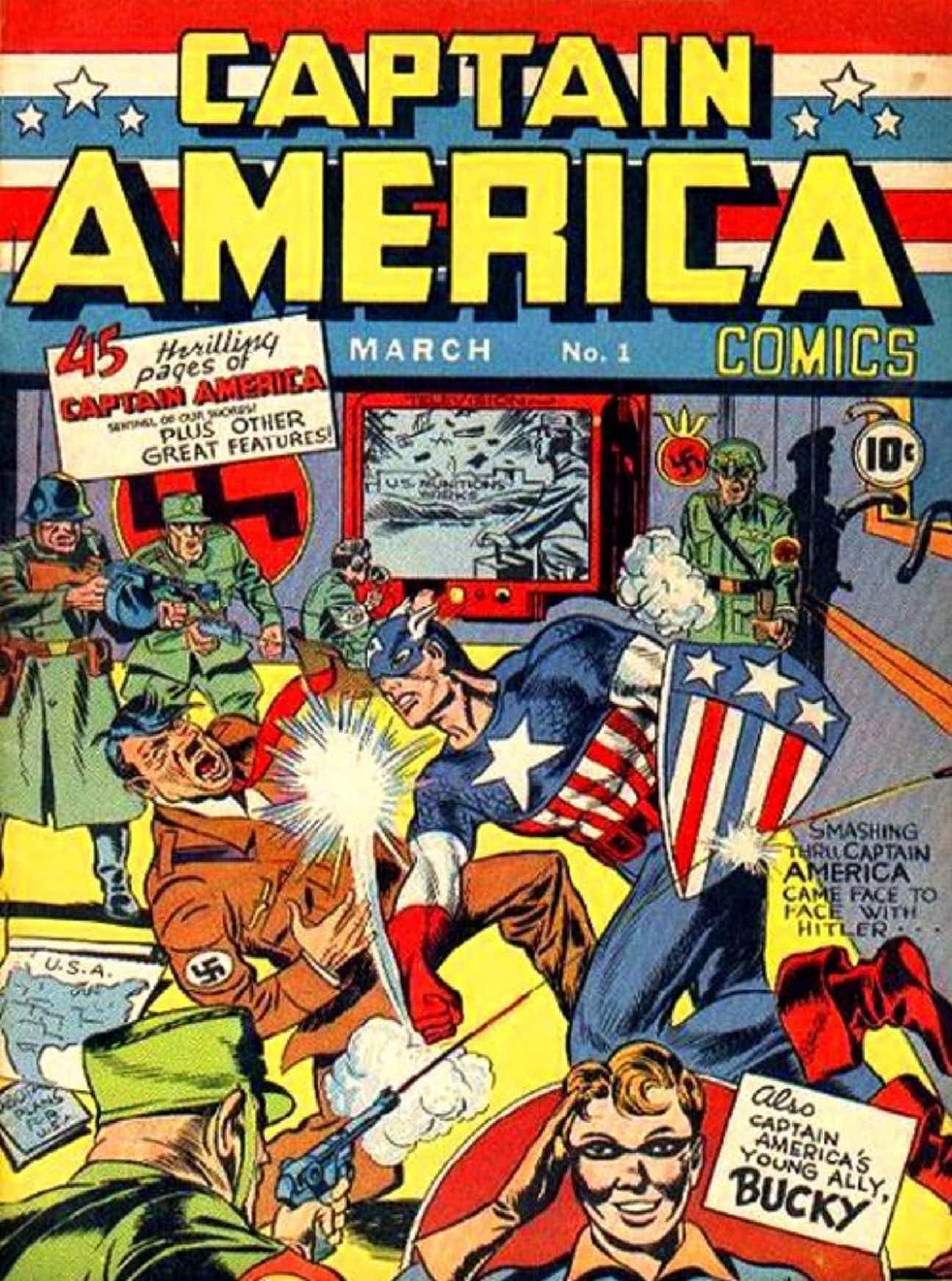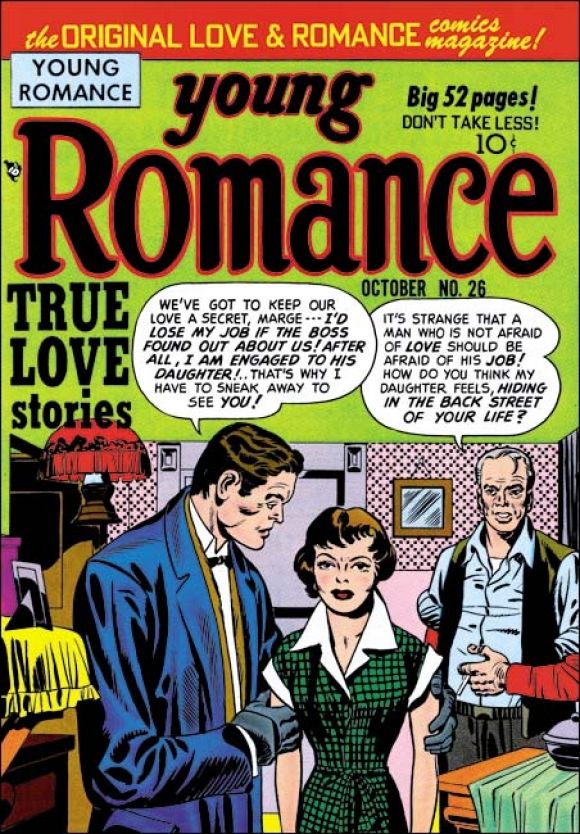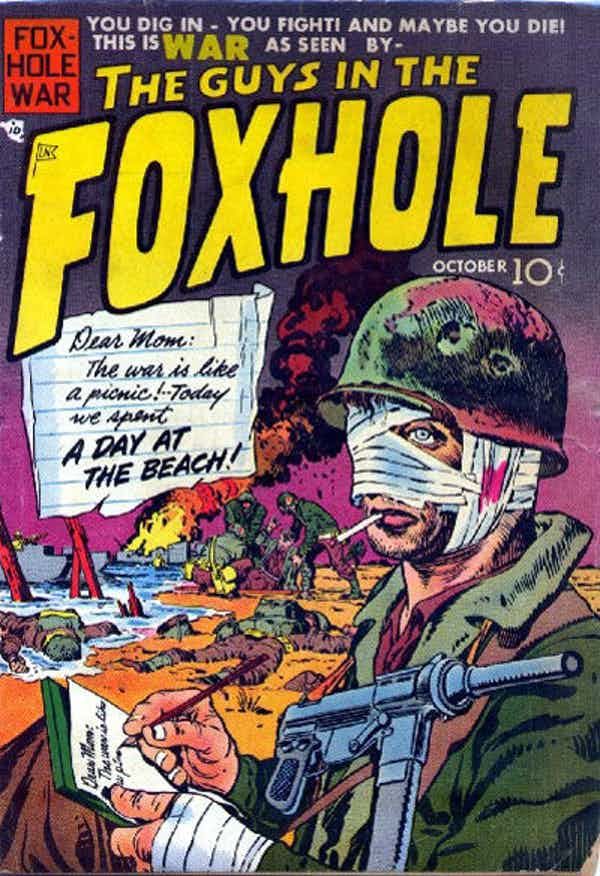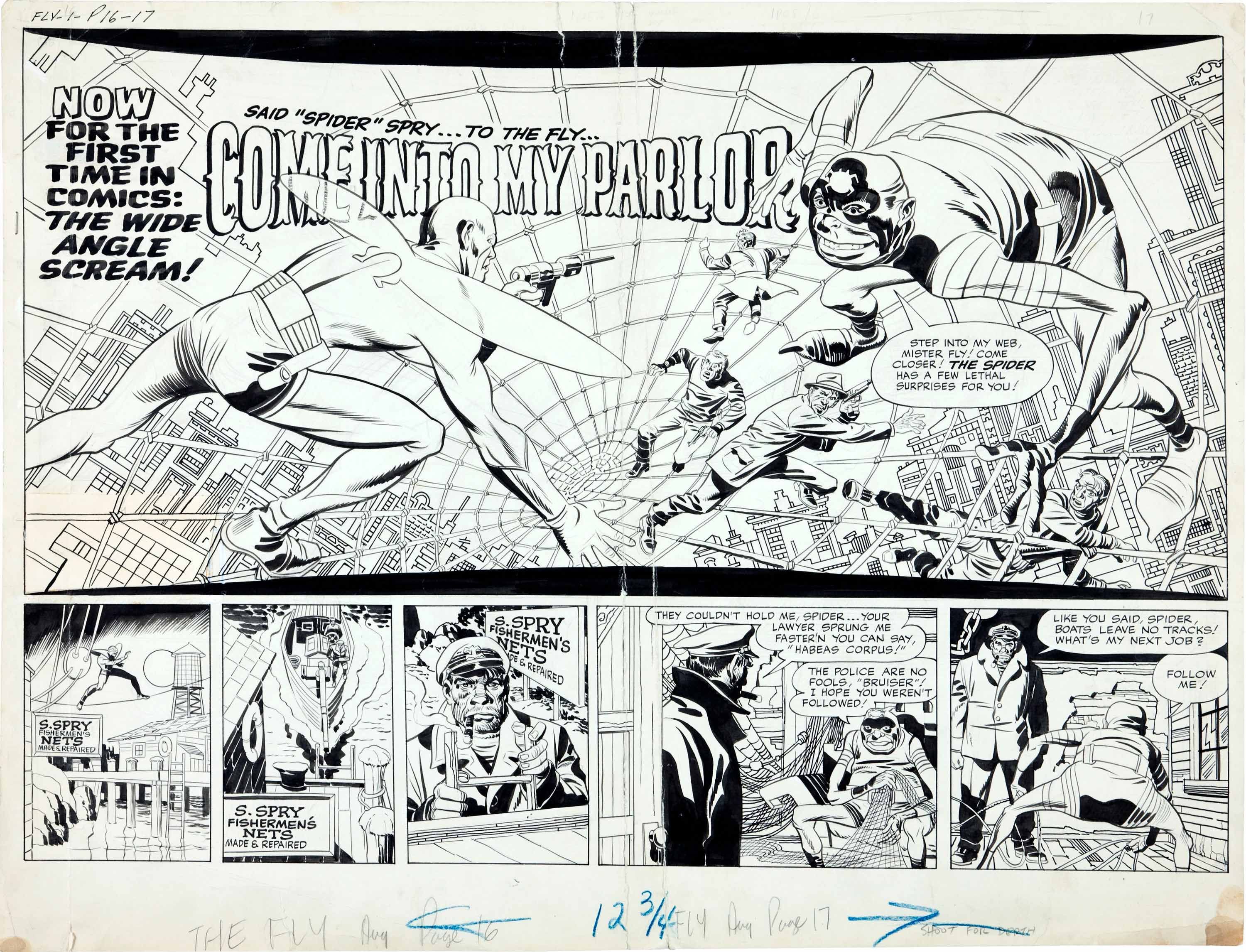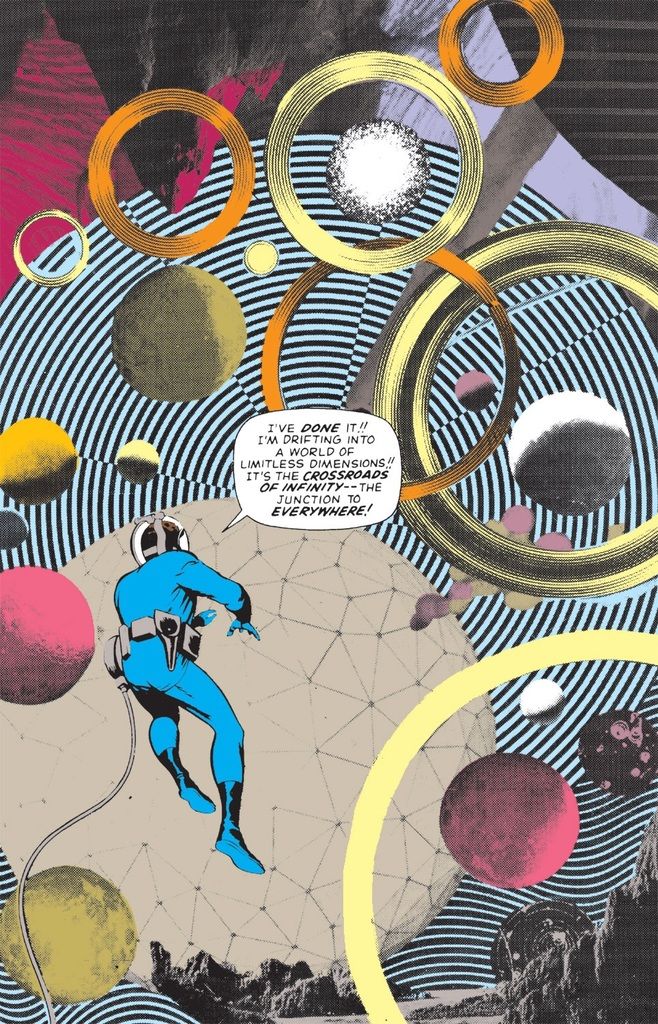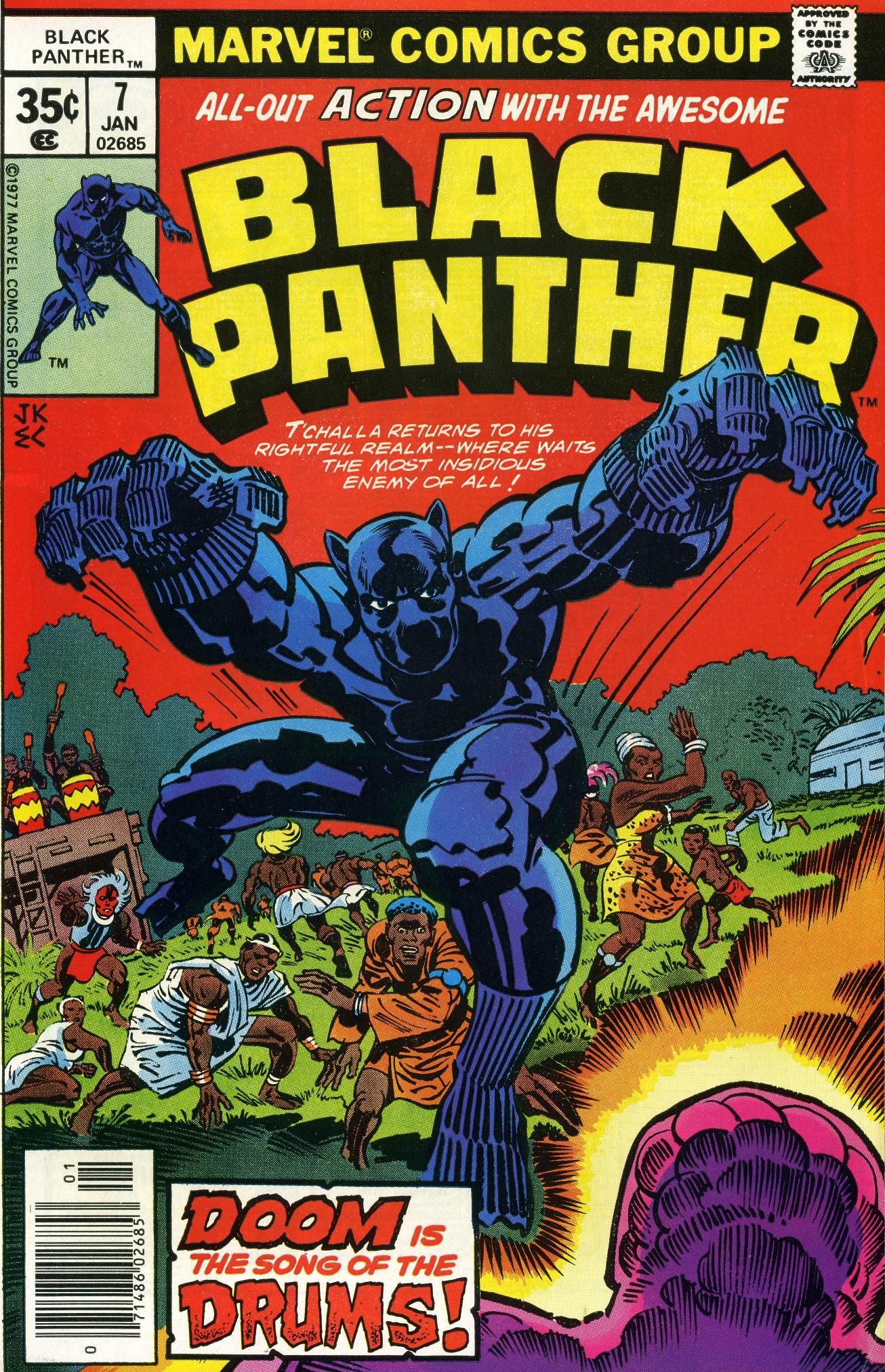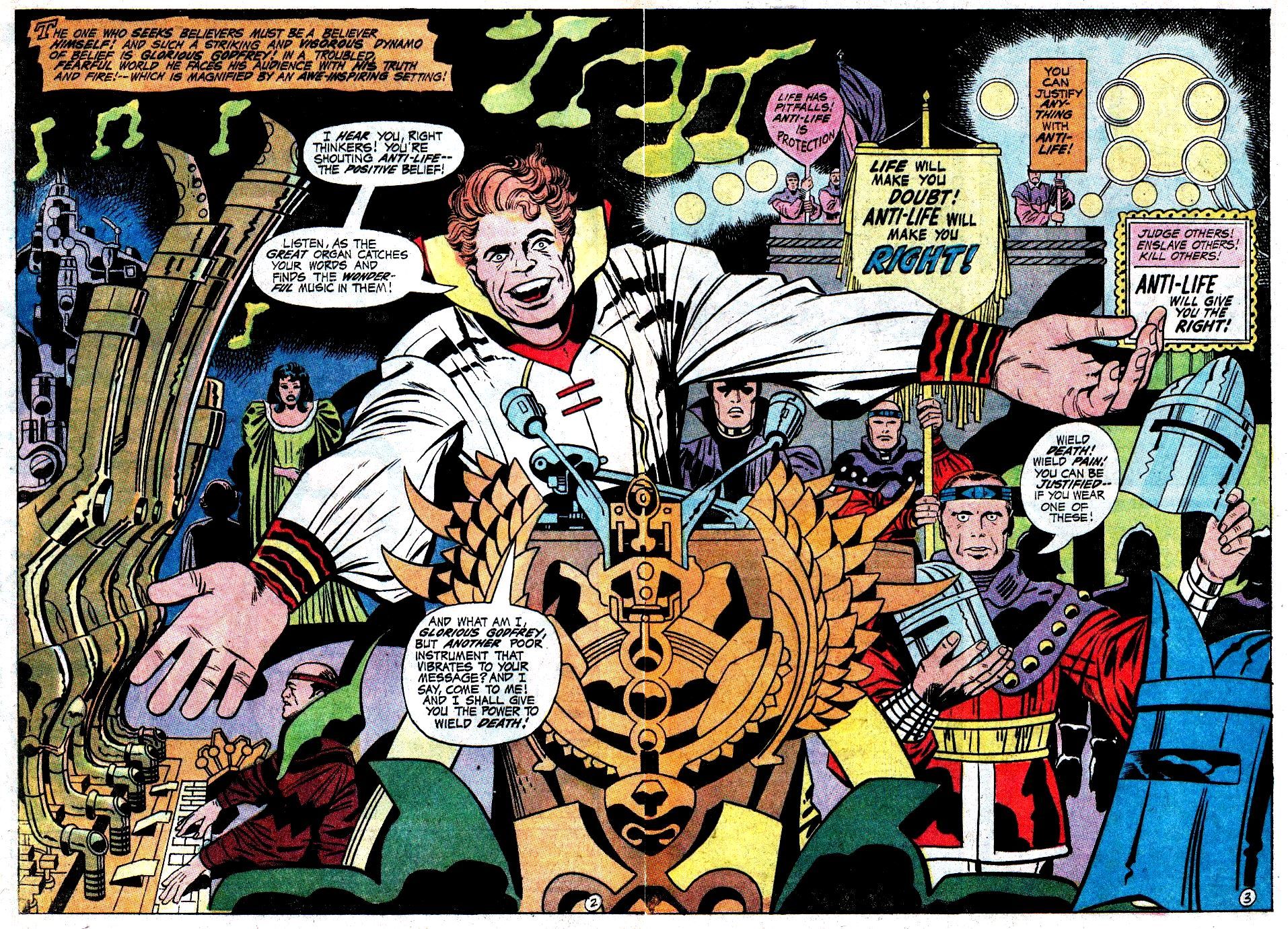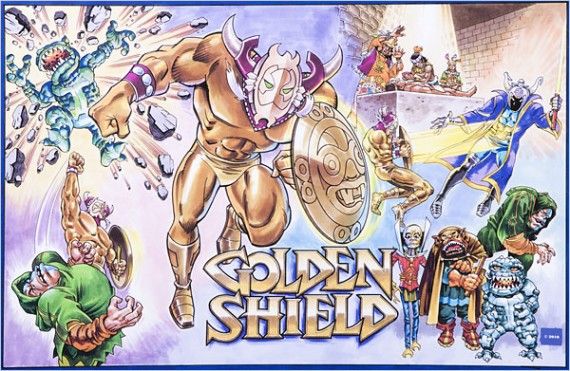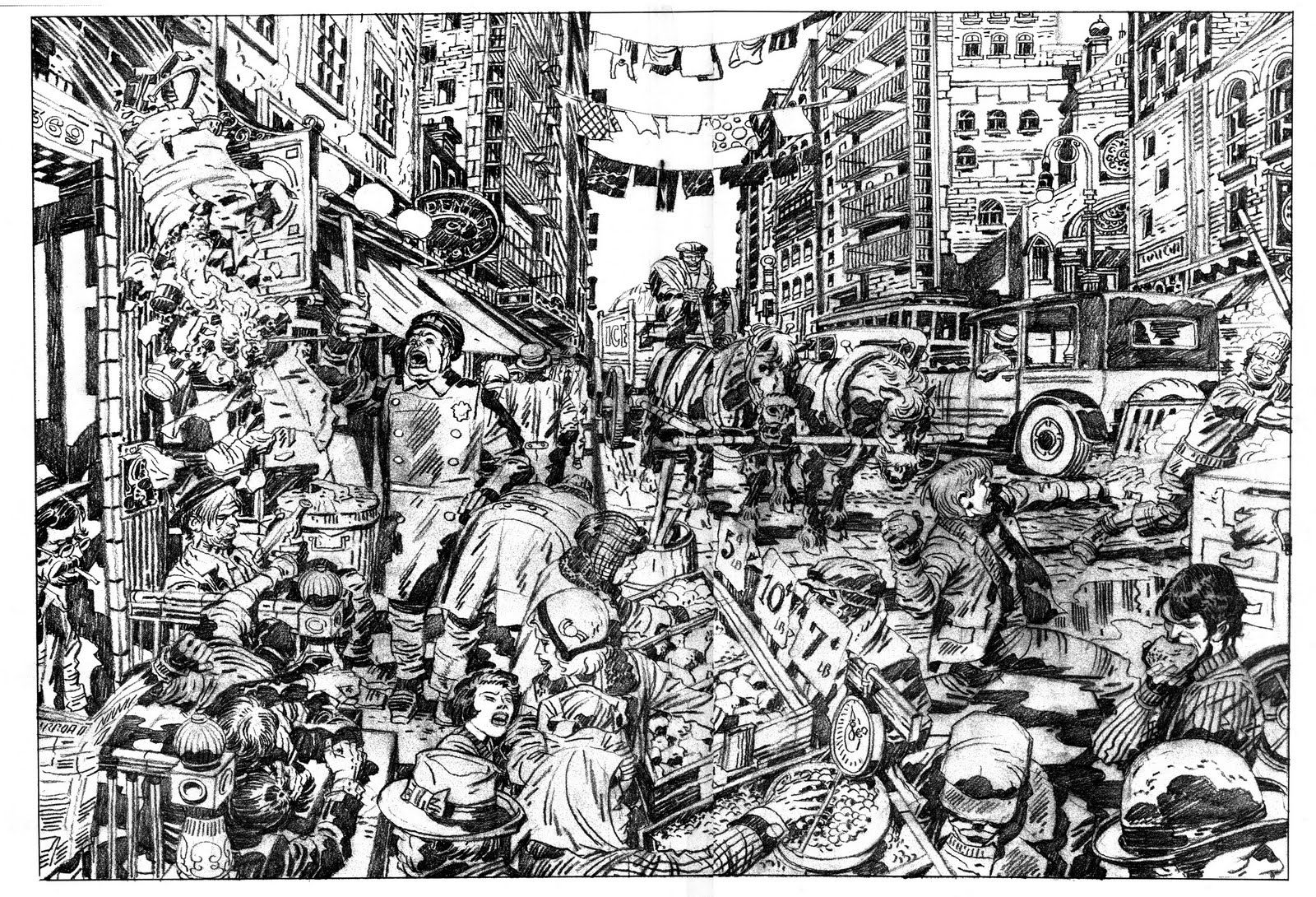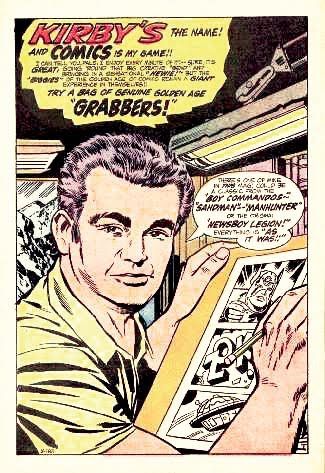August 28, 2017, marks 100 years since Jacob Kurtzberg was born in an apartment on New York City's Lower East Side. In the century since that day, the artist who came to be known the world over as Jack Kirby change comic books forever multiple times.
Over his six decades making comics, the King produced literally thousands of comic books, strips and other related masterpieces -- and there are at least as many ways to honor the man's legacy. Plenty of tributes today will focus on his seminal work co-creating Captain America, the raw power of his imagery, his tenure as the definitive visual creator of Marvel or his more personalized and progressive later work at DC.
RELATED: Jack Kirby’s 100 Coolest Comic Book Creations
But at CBR, we wanted to celebrate Kirby the trailblazer, the game changer… the innovator. That's because when you look around you at the state of comics and cartooning in America today, there's almost no kind of comic project that Kirby didn't already make first or better than the countless other talents that have swam in his wake. Here are 10 innovations that we have the King of Comics to thank for, 100 years later.
Kirby As Political Cartoonist
At this point, if there's any Kirby image people everywhere know it's his iconic cover of 1941's Captain America #1 showing the titular hero punching out Adolf Hitler. But that cover is more than a standard piece of WW2 era propaganda. As CBR's Brian Cronin recently pointed out, Kirby and his then-partner Joe Simon's choice to kick off their patriotic hero's career with that scene was no small thing. It was a bold and politically charged act for comic books, which was at the time considered a bottom barrel industry.
And throughout Kirby's career, the artist continued to promote his political worldview through his work. While his comics largely veered towards political metaphor over the years rather than outright portrayals of public figures (though his associates have drawn parallels between his great villain Darkseid and Richard Nixon, for instance), Kirby never shied away from offering his take on the days events. Over his career, the King was every bit the provocateur and rabblerouser as the political cartoonists in the newspaper page, and his political style has empowered comic book makers for generations to be similarly bold with their work.
Kirby As Romance Artist
In 1947, with the war behind them and comics in transition, Simon and Kirby launched Young Romance -- widely considered the first ever romance comic book. But while this fact is often cited as a comics footnote in either of the two men's careers, or in the life of a genre which has mostly been sidelined in recent decades, it's important to look at the creation of Young Romance for what it says about Kirby and his collaborator's approach to comics making on the whole.
For Kirby, comics wasn't a passing fad, a single adventure genre or a medium meant to pander to one audience. For him, comics were meant to be the biggest of big tents. He worked to draw in as many kinds of readers he could and was creatively interested in telling many kinds of stories. So any time someone tries to tell you that comics "aren't for girls" or "are run by superheroes," you tell 'em Jack Kirby disagrees. Plus, the Simon & Kirby romance comics are just plain great, and there are plenty of modern opportunities to track them down and give them a whirl.
Kirby As Self-Publisher
Today, self-publishing your own comic is as easy as logging into Tumblr and clicking "Post." And even if you insist on print publication, making mini-comics at a local copy shop is a breeze. But before the black-and-white boom of the '80s made putting out your own comic all the rage, Simon and Kirby were putting their creative fortunes in their own hands, when such a venture was trickier and riskier.
In the early '50s, the pair funded and launched Mainline Publications -- a line of comics completely owned, operated and created by them. Much like their Young Romance work, the pair's Mainline output displayed a variety of genres (romance, war, adventure and crime) meant to take advantage of as wide a readership as possible. And while the line was short-lived due to distributor problems (read more about it here), the effort is a reminder that Kirby's contributions to the model for a comics career are every bit as progressive as his work on the page.
Kirby As "Widescreen" Comics Maker
The above image is from The Fly -- one of the last major efforts from the team of Simon and Kirby for Archie Comics in the late '50s. The comic always began with a "Wide Angle Scream" spread -- a two-page splash meant to evoke the razzmatazz film gimmicks of the 3D era. While the technique is a period specific cliché, it's also an example of the way that Kirby pushed the comic book medium to its formal limits across his career.
Early comic books frequently followed the compressed style of their newspaper forbearers with stacks of small panels cramming as much story into each page as possible. But Kirby was one of the earliest and strongest voices for expanding the comic page's storytelling potential with innovative layouts, story patterns and splash pages that ratcheted up the excitement of comics as a visual medium. By the time Kirby landed at Marvel in the '60s and through his later work, the artist often drew images that pressed against the limits of every available space with godlike characters and his signature collage work still shocking young artists with the expanse of Kirby's imagination. Check out our tribute to Kirby from last year for a taste of how he broke comics into a "widescreen" mode, decades before the format became the go-to style.
Kirby As World-Builder
In the era of the Marvel Cinematic Universe, all the talk of Hollywood is centered on fictional worlds where character after character live side-by-side. And as the movie folks chase this perceived path to the bank with decidedly varied results, it's important to remember that Kirby's work with Stan Lee making the Marvel Universe was far more than saying "Iron Man lives down the street from Spider-Man."
What made the Marvel Universe a groundbreaking piece of fiction was its scope and depth. While stories may have started with the simple premise that superheroes occupied the same place, Kirby in particular worked over the years to make the "universe" concept much truer to its name. In particular, Kirby's work in the prime years of the Fantastic Four became all about the revelation of worlds within worlds. The unfathomable depths of the Negative Zone. The cosmic threats of Galactus, the Kree, Annihilus and more. The secret ancient civilizations at the heart of the Savage Land and the Inhumans' society on Attilan. All of these not only added to the verisimilitude and believability of the Marvel U, they also peeled back the layers of Kirby's mind in an endlessly rewarding creative exercise that writers and artists are still trying (and failing) to match up to today.
Kirby As Champion of Diversity
In a few short months, fans will be treated to Marvel Studios' version of Black Panther. And while that movie is rightly earning praise for putting African-American creators in the driver's seat of a major Hollywood tentpole at last, the film wouldn't exist without Kirby, who co-created the character with Stan Lee in comics' Silver Age.
It can't be understated how much Kirby contributed to diversifying comics on the page. Aside from pouring the most personal aspects of his Jewish identity into Ben "The Thing" Grimm, Kirby gave comics its first major Black superhero in Black Panther and often championed strong women warriors with the likes of his Fourth World hero Big Barda.
While the work of diversifying comics both in print and in the ranks of creative and businesspeople is nowhere close to being done, it's important to remember not only that Kirby led the way creatively but also to recall why he did it: because it was the right thing to do.
RELATED: Mark Evanier Celebrates Legacy of Kirby: King of Comics
Kirby As Subversive Satirist
Jack Kirby could display a tough-as-nails personality from his years fighting in World War II to his outspoken defense of comics as an art form and of creator rights. But even though he always took the medium of comics seriously, it's important to remember that he never took it too seriously. In fact, Kirby was one of the first artists to send up not only the comics medium but also his own work and the wider world itself in his characters.
For example, Simon and Kirby's mid-'50s creation The Fighting American was equal parts send-up of their own Captain America as it was a nasty takedown of "Red Scare America" and the more jingoistic elements of the post-war nation. Kirby's satire became both more personal and bold when he created The New Gods for DC in the '70s with the likes of Glorious Godfrey (a media-manipulating hate monger whose methods have drawn prophetic comparisons to our current president) and Funky Flashman (a not-so subtle sendup of his former partner Stan Lee). No matter where he worked, Kirby dug into the ugliness of both his country and comics with a wicked smile on his face, and current creators would do well to remember that humor can often be the best way to make a serious criticism of those in power.
Kirby As Mass Media Crossover Creator
Few fans may realize that Kirby started his professional career in animation, working briefly for Fleischer Studios on Popeye cartoons. But Kirby's connection with the wider media world outside of the four-color medium stretches far beyond that footnote. From the late '70s on, Kirby worked several full-time jobs in animation both for the Hanna-Barbera and Ruby-Spears studios (some of which may still see the light of day). He designed dramatic costumes for plays and created previs art for movie and theme park projects that never came to fruition along with countless other media-driven art projects.
Today, people from the comics world make the move to mass media like TV and film more than ever before. Some, like Robert Kirkman, expand their footprint while sticking with comic books. Others are fly-by-night operators hoping to use comics cachet to launch their own (mostly uninspired) movie projects. But no matter what path comics take to the broader entertainment world, it's important to remember two things. One: Kirby was there first, blazing trails for comics makers with creative ambitions long before anyone wanted a comic artist on their project. Two: From his earliest days, Kirby could have stuck with animation as a full-time career, but he didn't. He chose comics. To the benefit of us all.
Kirby As Autobiographical Artist
The world of alternative comics may seem far away from the godlike heroes Kirby drew for most of his career, but the more personalized forms of comics expression that exist today have a lot in common with the King.
Aside from his obvious cartooning influence on many of the luminaries of alt and indie comics, Kirby also blazed a trail in the form of autobiographical comics. In 1983, Kirby was commissioned to write about his own life by publisher Richard Kyle. The result was "Street Code" -- a powerful story told all in Kirby's signature pencils that mixed his world-building visuals with his years growing up in Manhattan's early 20th Century tenements. The final story didn't see print until 1990, but it stands out as a jaw-dropping example of another path Kirby's art could have taken and shows many art comics a thing or two about a truly personal expression in the form. Check out pages from this forgotten masterpiece here.
Kirby As Comics Auteur
While there are many more anecdotes, examples and illustrations of Jack Kirby's pioneer status in comics, there's no better way to see the depth of his contribution than looking at the work itself. And the work shows you what is perhaps the comic mediums first true auteur.
Due to his Depression upbringing, Kirby rarely turned down an offer of paying work. But he also never phoned in a single page. Surveying the artist's output from his earliest pages with Joe Simon, through his early commercial successes and on to his multiple reinventions at Marvel, DC and beyond, clear artistic themes come through in all the examples.
Kirby drew a world of men and women pushing past the everyday and into extraordinary. Similar to himself, his characters were pioneers: a colorful mix of astronauts, freedom fighters, geniuses and strivers who came from humble roots but achieved godlike greatness. Over and over, we see the same images in Kirby's work: bodies in motion pushing against the rules of the physical world, eyes in close-up obsessing over the little details and hands reaching out of the page and directly at the reader yearning for a connection. Kirby was fascinated by gods. His conception of the cosmic was one both awe-inspiring and terrifying. It was as if humanity was always meant to become something greater if it could only be brave enough to fight its way there.
So on the 100th anniversary of Kirby's birth, don't just remember the characters. Don't remember the movies. Don't remember the franchises or the action figures or the t-shirts made of his work.
Remember the artist. Remember the man. Remember the King.

